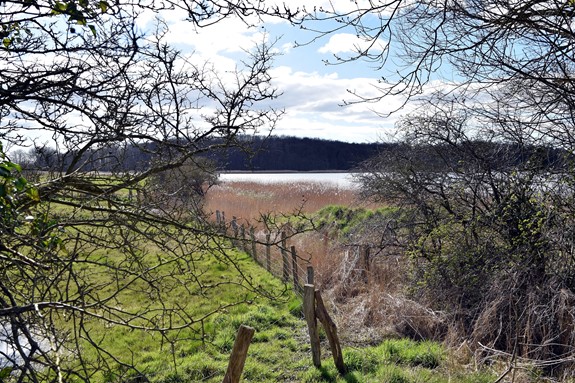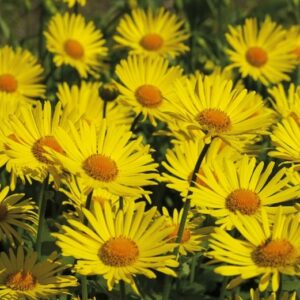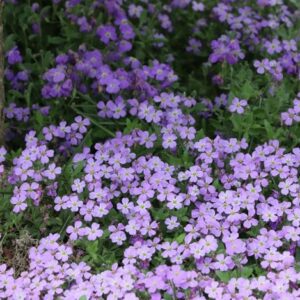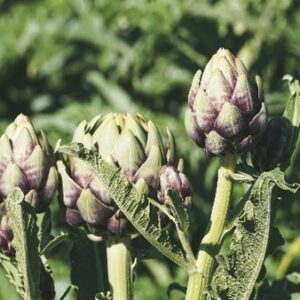What to do in the Garden in March
Sometimes March can be very stormy, cold and windy, and it’s not all that unusual to have snow. But sometimes we can have warm, still, sunny days which remind us that Spring is on the way. In “Great Expectations” Charles Dickens described a day in March in this way: “It was one of those March days when the sun shines hot and the wind blows cold: when it is summer in the light, and winter in the shade.” If February to the Anglo-Saxons was Solmonath (mud month) or Kalemonath (cabbage month), March was Hyldmonath (stormy month) or Hraedmonath (rugged month). This gives a clue to the way in which we often think of March. “It comes in like a lion and goes out like a lamb”, as the old saying goes. However, even this is not always true.
The quote about March that is really likable, however, was by someone called Garrison Keiller: “March is the month God created to show people who don’t drink what a hangover is like.” Obviously not a big fan of March.
So perhaps the best thing we can say about March is that it is unpredictable. If you’re a gardener, this can make it difficult to plan since you don’t know what the weather is going to do next. However, gardeners are optimists (they have to be, or they would never sow or plant anything) and the vernal equinox, the beginning of Spring, occurs around the third week of March – well into the time we want to be thinking about gardening.
The days are getting longer and more and more green shoots and buds are appearing in the garden. So it’s time to start thinking about planning for and looking after the garden.
Tips for gardening in March
Sowing seeds
This is the time when we want to start thinking about sowing seeds and getting the ground prepared for growing crops and annual flowers. But there’s a note of caution. Although the information on seed packets tells you that their contents can be sown between, say, May and June, we should always be guided by the weather. A warm, sunny day may make you want to get out into the garden and start sowing, but it can be followed by freezing cold, wet weather, and seeds will not germinate in these conditions. March is the time, however, for sowing hardy annual seeds and perennial seeds under cover, though it’s better to wait until the middle of the month to sow half-hardy annual seeds when light levels are higher and the nights less cold.
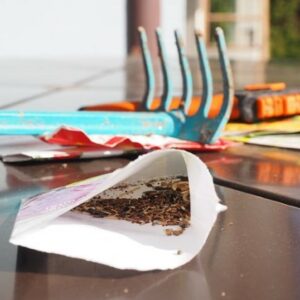
Vegetable and herb seeds can also be sown in a heated greenhouse or propagator if the weather is not suitable for outdoor sowing. These include aubergines, cucumbers, courgettes and pumpkins. When soil conditions are suitable, seeds such as beetroot, broad beans, various brassicas, carrots, lettuce, parsley and spinach can be sown outdoors. The soil can be warmed up beforehand with cloches or fleece to help ensure good seed germination.
The main thing is not to get too carried away, as I did last year, and sow too many seeds at once! Otherwise, once you start pricking everything out, you soon run out of spaces to put all your seedlings and, if they’re not in the right place, they will become leggy and spindly. It’s better to sow things in succession, so that you don’t have too many seedlings at any one time. I hope I’ve learnt my lesson!
Bulbs
Bulbs in the garden, such as daffodils, crocuses, scillas and chionodoxas, are really coming into their own now. It’s worth dead heading them so that the plants can put their energy into the bulb for next year. And don’t cut the leaves off until they die back naturally. You may have an untidy garden for a few weeks, but it’s worth it in order to have plenty of flowers for next year.
Now is the time to think about planting summer flowering bulbs, corms and tubers such as lilies, alliums and gladioli. Dahlias can be planted in pots under glass. Again, wait until the soil is warm enough, as bulbs will not grow and may rot if the soil is too cold. The ideal soil temperature is 13o C.
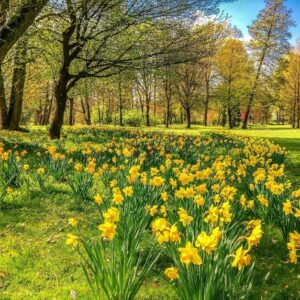
Daffodils
Herbaceous perennials in March
Perennials in bloom now include pulmonaria (lungwort – so called because it was thought at one time to cure afflictions of the lungs), primulas, aubrieta, doronicum and alyssum. The predominant colours at this time of year seem to be yellow and purple:
March is a good time for planting herbaceous perennials and also for lifting, dividing and replanting those you already have in the garden. Most of the major online seed companies and nurseries have very good advice on their websites on what to plant or sow at different times of the year, as does the Gardeners’ World website and the RHS website.
The vegetable garden or allotment
In the vegetable garden or on the allotment globe artichokes (Cynara scolymus) can be planted in March, as well as Jerusalem artichokes (Helianthus tuberosus), which are not artichokes at all, but a member of the sunflower family. Both grow very tall and take up a lot of space, so allow for this. March is the right time to establish an asparagus bed, but it’s important to ensure it’s in the right place, as it will be there for many years to come.
Once the danger of frost has passed, potatoes can be planted out in trenches in the garden or in large tubs if space is limited. A very good site for advice on growing vegetables, whether you have an allotment or not, is Allotment & Gardens website.
Preparing the ground
This section should probably have come at the beginning of the article, as good soil preparation is essential before sowing and planting take place. I make the excuse that thinking about sowing and planting is more exciting – not that soil preparation is boring, but it doesn’t spring to mind as the job you can’t wait to start! But, as the days get warmer, the weeds start to grow more strongly, and, if you can get to them at this time of year when they’re small, you will have less trouble later.
Slugs are also starting to appear and will decimate the leaves of plants like hostas and delphiniums as they emerge from dormancy, so slug barriers (or whatever control you choose to use) are essential. Once you’ve weeded the beds, a mulch of compost can be put down and a general-purpose fertiliser scattered on the ground before you start sowing and planting. Plants grown in pots can be top dressed with potting compost with a bit of fertiliser thrown in, and stakes put into the soil to support herbaceous perennials before they start to get large and flop over.

Once spring gets under way there will be a lot to do in the garden and the longer days mean that more time can be spent out there. Of course, there will be some days when the weather is so bad that you can’t go outside and you wonder if winter has returned again. March may be unpredictable, but it’s never boring

About the Author
Caroline Bowman has been hooked on gardening ever since she grew some thyme from seed and planted it in a window box when she lived in a flat in London. Fifty years later she is still hooked on gardening, but now she lives in Lincolnshire in England where they have quite a big suburban garden as well as an allotment, where they grow fruit and vegetables. Caroline loves flowering plants, in particular herbaceous perennials and she likes finding out about the more unusual varieties that will do well in the English climate and soil.
GARDENIZE GARDEN APP
Your garden friend with green fingers and photographic memory.
Gardenize is an app for gardening and cultivation that helps you to overview, understand and develop your garden and your crops. Organizing your garden makes it easier to succeed and your Gardenize app structures all information and make it searchable. You’ll get tips and inspiration from other Gardenizers around the world. All Gardenize basic features are free to use. You can download the app from the App Store or Google Play, or create an account directly in the web app in your browser. Get to know Gardenize better here.
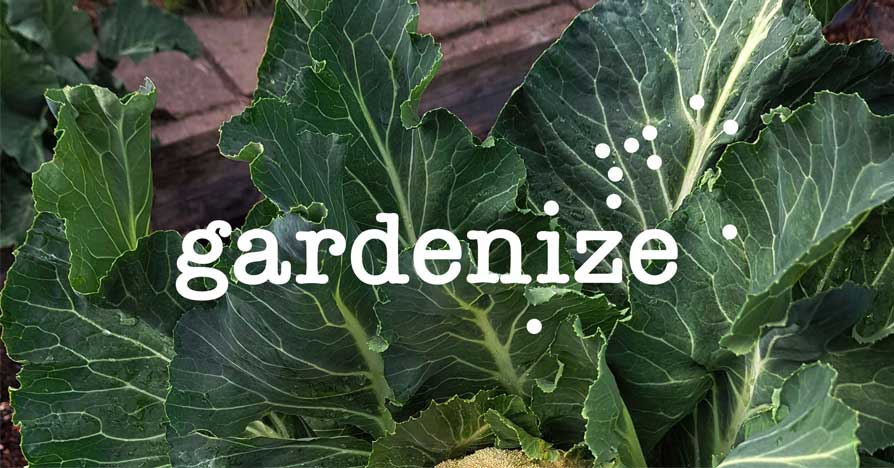
More from Gardenize
Images published on the Gardenize website belong to Gardenize AB and may not be used without permission.

